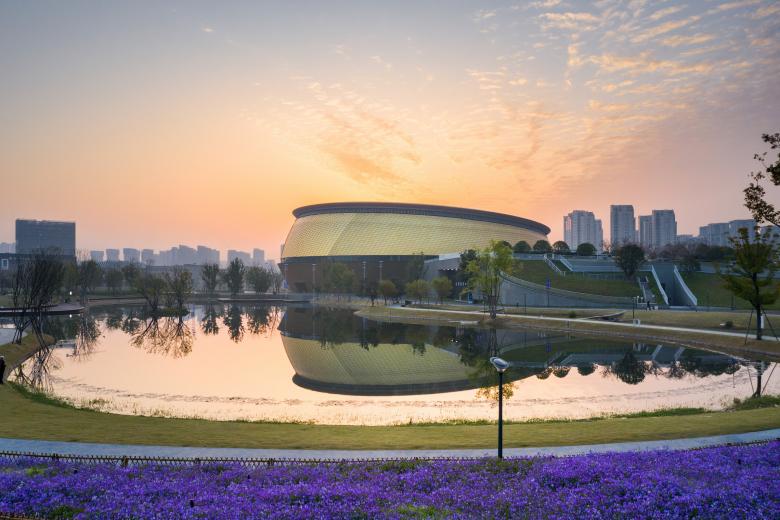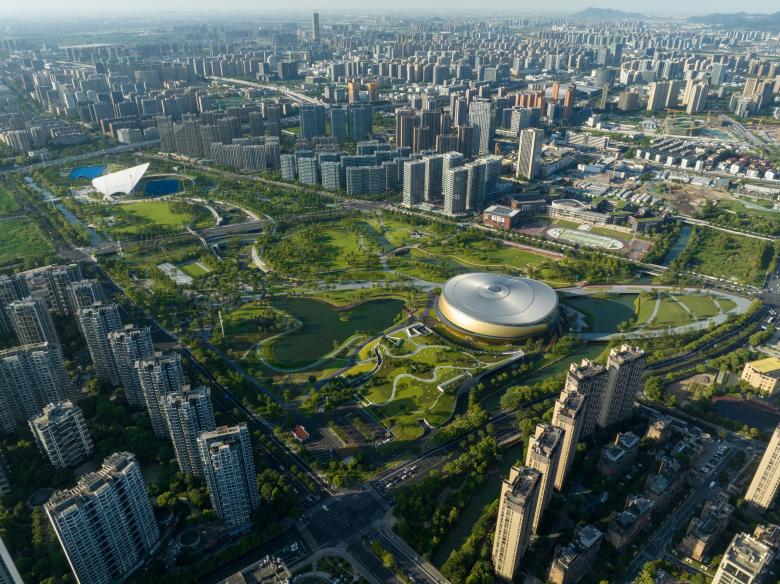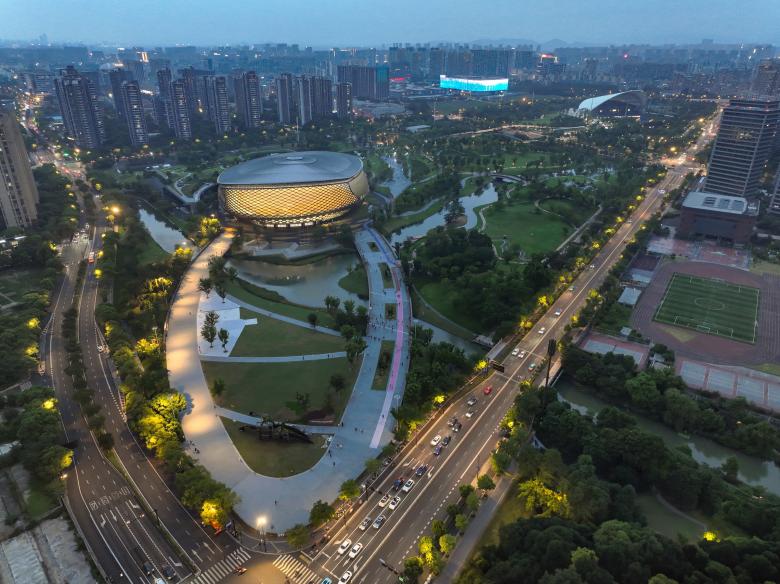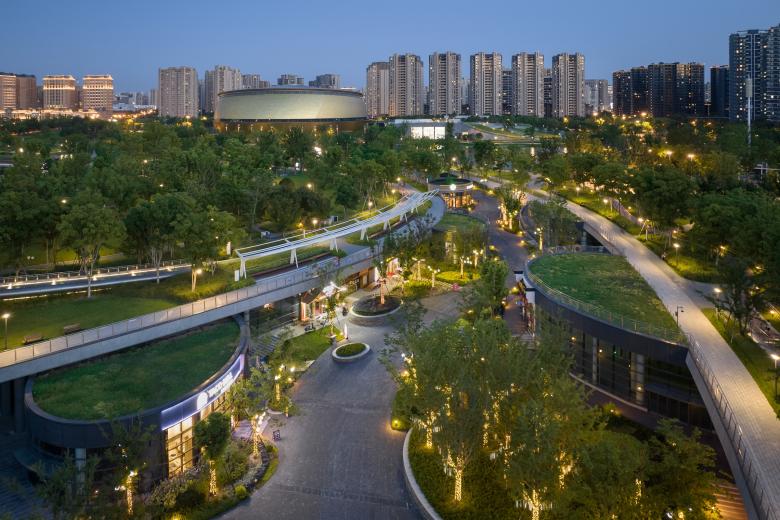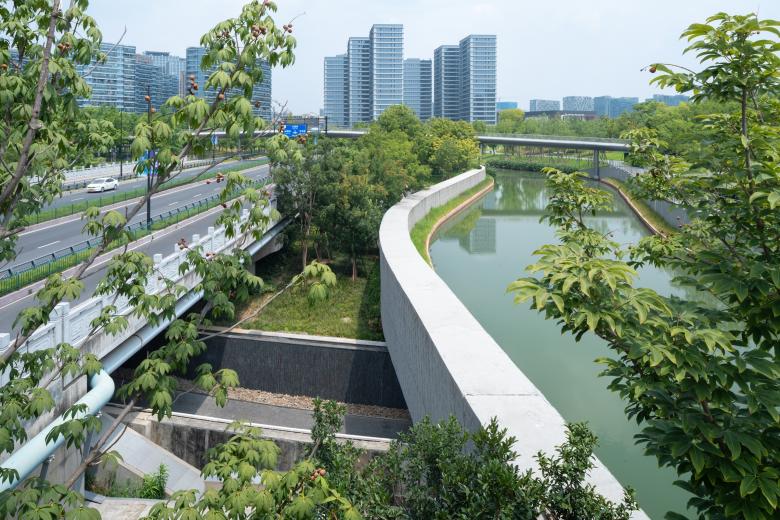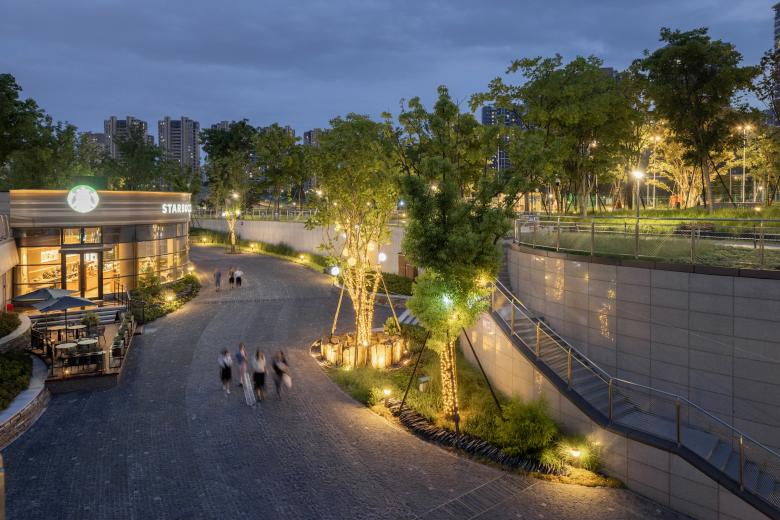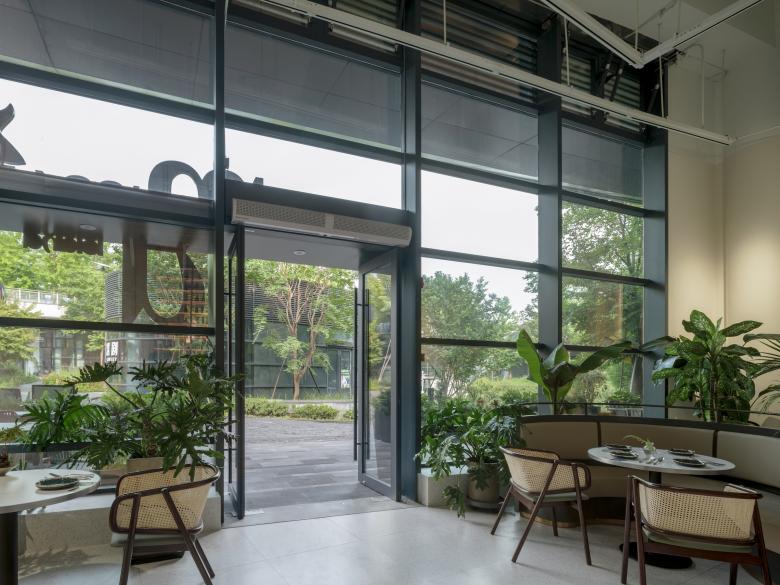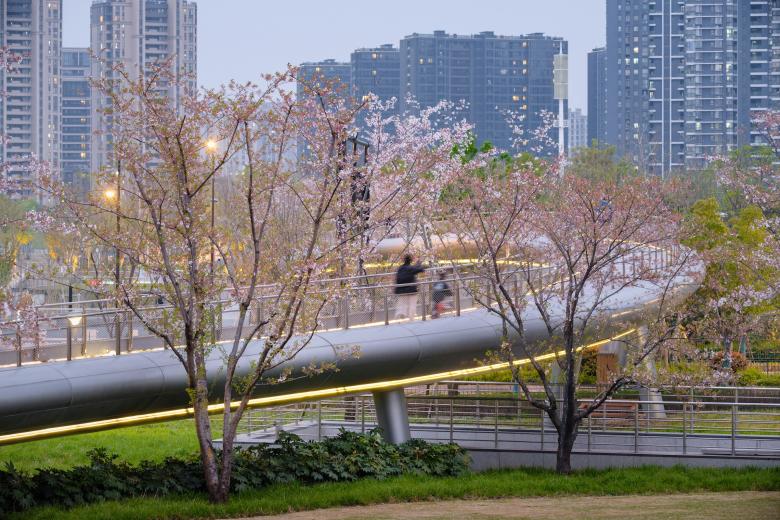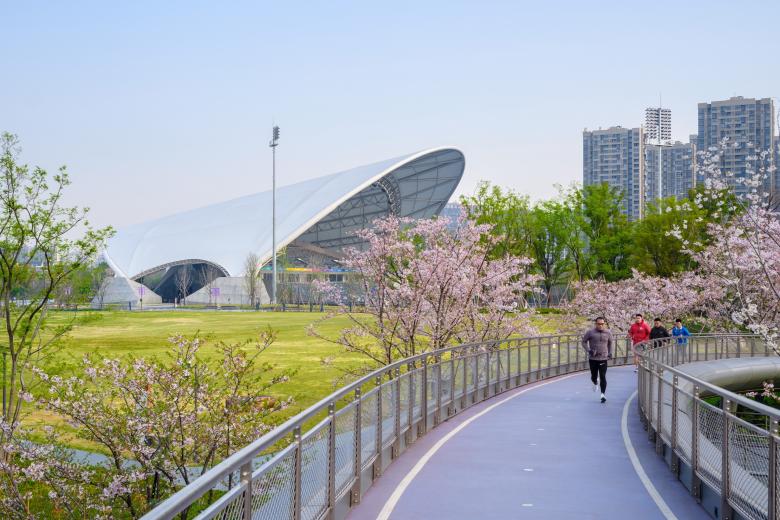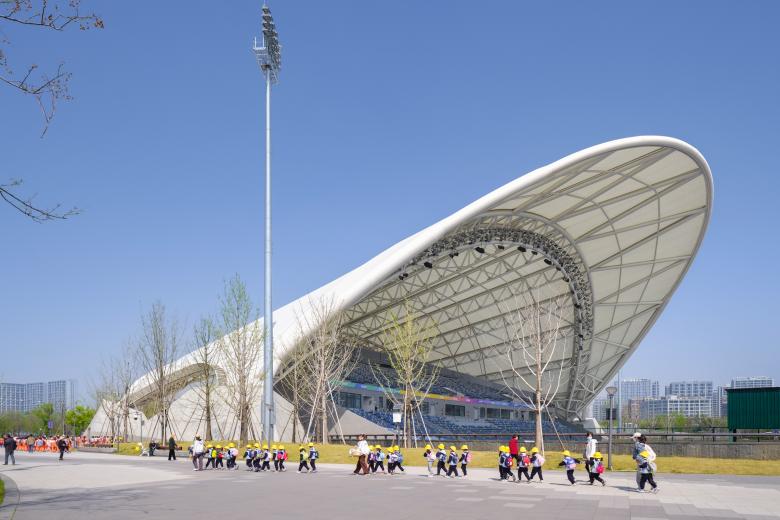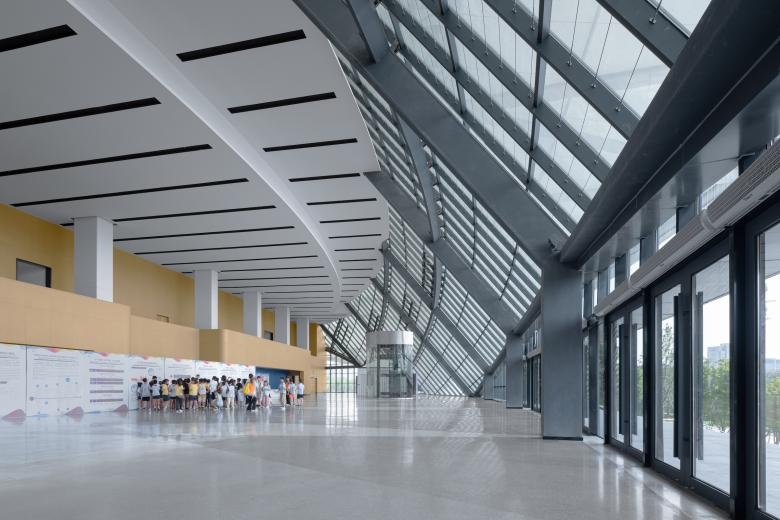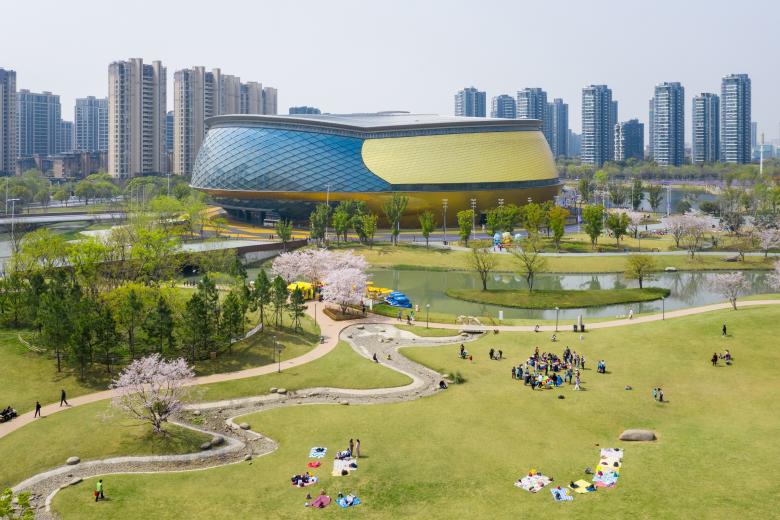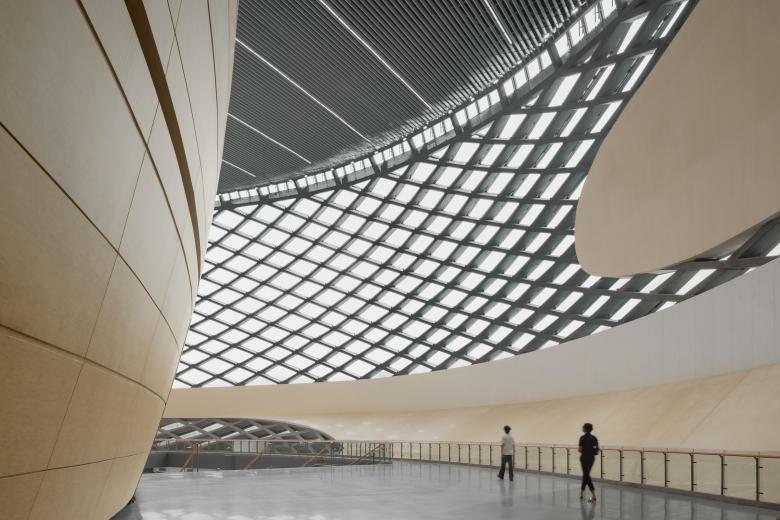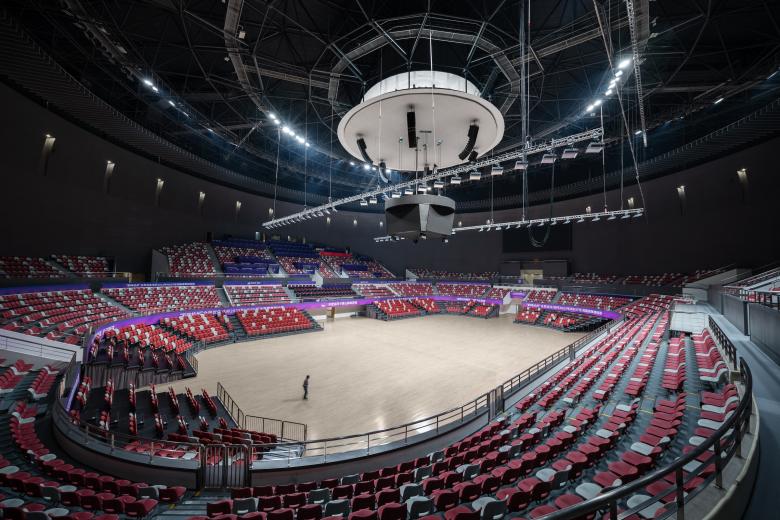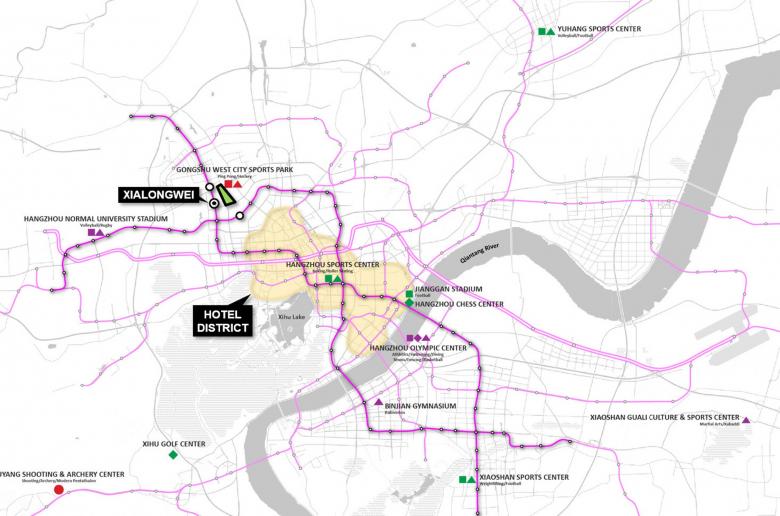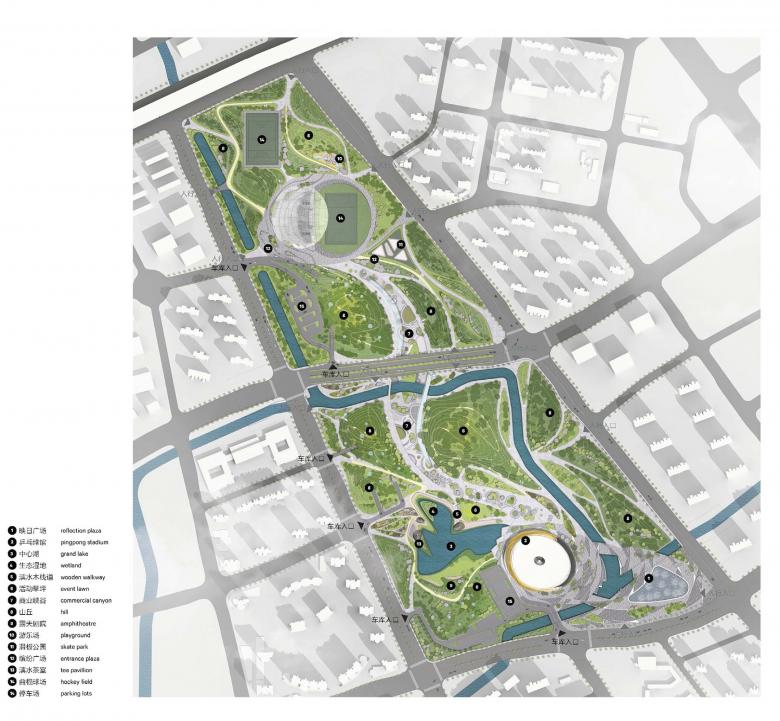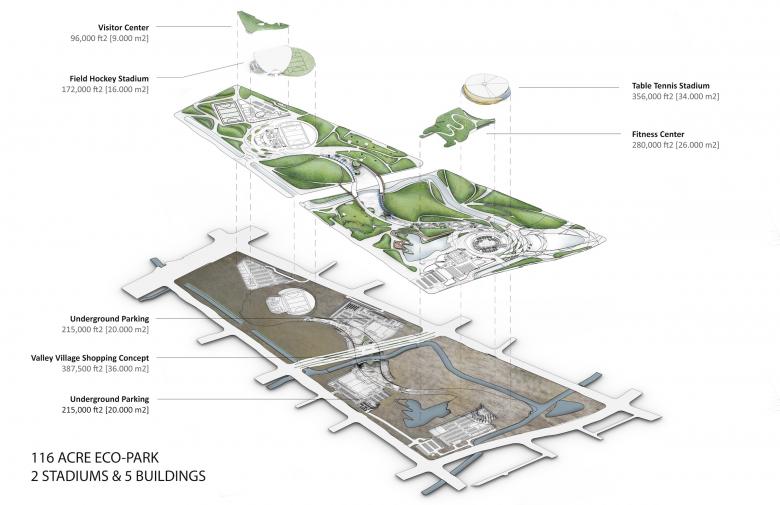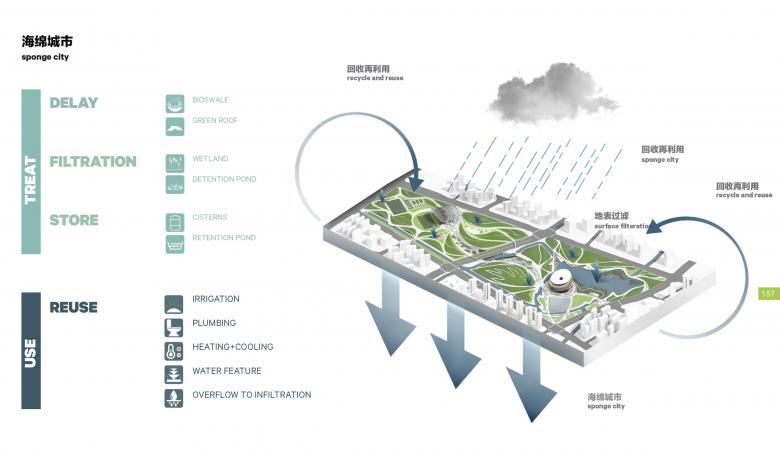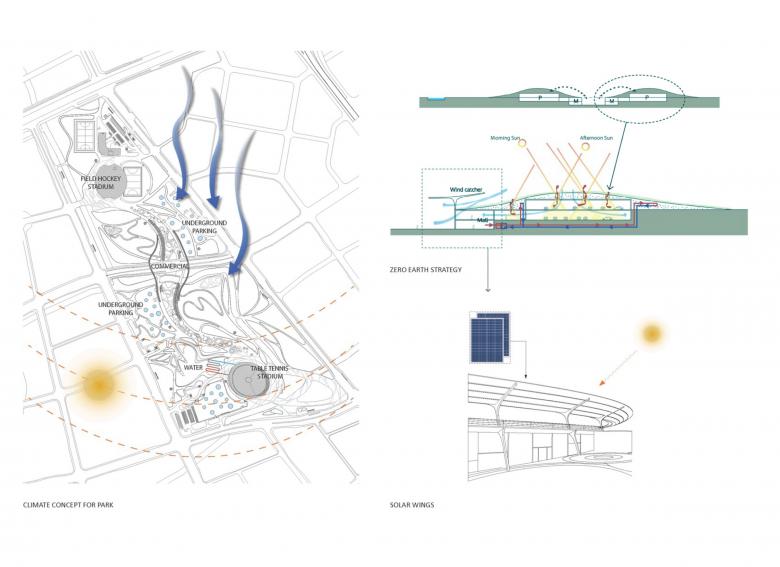29. september 2023
Asian Games Table Tennis Hall. (Photo: SFAP)
The 19th Asian Games opened on September 23 and run through October 8, 2023, in Hangzhou, capital of Zhejiang province. The Games, originally scheduled for 2022, were postponed for a year because of China’s Covid-19 policy. Of the more than fifty competition venues for the Games, only twelve were newly built. One of them, the Canal Sport Park in the Gongshu District in the northwest of the city, was designed by Winka Dubbeldam and her New York studio Archi-Tectonics with a concept that integrates landscape and building together.
Asian Games Canal Sport Park, aerial looking northeast. (Photo: SFAP)
The city of Hangzhou is famous for its scenic location on West Lake and its lovely landscapes with traditional gardens and temples. Until a few years ago, it was a tranquil city whose tallest buildings were historic pagodas that were important tourist sites. The city has grown exponentially in recent decades and now has over nine million inhabitants. Nevertheless, the historic West Lake, which was artificially created over the centuries, and its artistic design have shaped the ideas of an ideal Chinese garden landscape that is still cited in contemporary concepts.
Asian Games Canal Sport Park, aerial looking northwest. (Photo: SFAP)
Park ConceptArchit-Tectonics won the invited competition for the 2023 Asian Games in 2018, when five international firms participated. In addition to the sports facilities for field hockey and table tennis, the challenge was to shape the 1.6-kilometer-long site, which is divided by a main road and a canal down the middle, into a public “eco-landscape” with a functioning overall concept following sustainability criteria. The stadiums also had to be designed such that they could be used for concerts and other events following the Games. Due to the high building density in the surrounding area, the development incorporates the sponge city concept, which allows surface water to be treated in a controlled manner even during heavy rain events.
Village Valley Mall. (Photo: SFAP)
The designers placed the two main sports facilities, the Field Hockey Stadium and the Table Tennis Stadium, at the ends of the slightly trapezoidal site, connecting them by a pedestrian “commercial canyon” that is S-shaped and integrated into the landscape, passing under the intersecting road and canal. Many functional areas, such as the parking and the ancillary areas for the commercial canyon, are located underground.
Road and canal crossing the site. (Photo: SFAP)
Sports, Culture, LeisureThe topographically integrated commercial zone is structured by small pavilions that organically push out from the landscape into the pedestrian zone. As the social center of the park, the Village Valley Mall, as it is called, has lounge areas, cafes, restaurants, and kiosks, all with green roofs. In addition, two pedestrian ramps bridge the canal and the street, connecting the two sports facilities at the north and south ends of the site.
Village Valley Mall. (Photo: SFAP)
Shop at Village Valley Mall. (Photo: SFAP)
Pedestrian bridge. (Photo: SFAP)
The Field Hockey Stadium is located at the northern end of the sports park. Architecturally, it is characterized by a large parasol that protects the entrance, the stands for 5,000 spectators, and the sports field from the afternoon sun. The thin, translucent canopy of the parasol acts as a visual sign at the entrance to the park due to its bold shape. After the Games, the sports venue will continue to be used for open-air community events.
Approach to Field Hockey Stadium. (Photo: SFAP)
Parasol of Field Hockey Stadium. (Photo: SFAP)
Lobby of Field Hockey Stadium. (Photo: SFAP)
At the southern entrance to the sports park is the Table Tennis Stadium, whose architectural design gives the sports park an iconographic appearance. The oval hall accommodates 6,000 spectators and can be optimized using a parametric design process so that the sports arena can be efficiently transformed into a venue for other events after the Games. The inner core space is clad with bamboo panels, while the facade is glazed on one side with diamond-shaped elements that bring daylight into the foyer. On the opposite side, the outer skin is closed with shiny golden brass shingles. The curved exterior form makes the building appear to float in the landscape, an effect that is enhanced by the diffuse reflection of the brass cladding.
Table Tennis Stadium. (Photo: SFAP)
Table Tennis Stadium. (Photo: SFAP)
Table Tennis Stadium. (Photo: SFAP)
The two main buildings are integrated into the man-made park topography, while their ancillary functions have been inserted beneath the landscape. The artistic treatment of landscape and buildings has a long tradition in China and is especially well known in Hangzhou, where the refinements around West Lake have grown over centuries. The technical aspects of dealing with rainwater infiltration and control, which are necessary today for obvious reasons, have their counterparts in the historical water regulation of West Lake and the interconnected canal landscape of the region. With the Canal Sport Park in Hangzhou’s Gongshu District, Archi-Tectonics has succeeded in building upon existing traditions and adapting them technically and aesthetically to meet today’s needs and expectations. It is therefore not surprising that the facility has already been awarded several prizes, such as the CTBUH Award of Excellence in the Urban Habitat category.
Context Plan. (Drawing: Archi-Tectonics)
Landscape Plan. (Drawing: Archi-Tectonics)
Location: Hangzhou, China
Architect: Archi-Tectonics
Structural Engineer: Thornton Tomasetti
Landscape Architct: !Melk
Traffic Engineer: Mobility in Chain
LDI: Zhejiang Province Institute of Architectural Design and Research (ZIAD)
Construction Drawing Design Consultation: Powerchina Huadong Engineering Corporation Limited (HDEC)
General Contractor: China Power Construction Group East China Survey and Design Research Institute Co., Ltd.
Construction Unit: Zhejiang Xinsheng Construction Group Co., Ltd.
Park Area: 47 hectares (116 acres)
Total Built Area: 195,000 m2
Green Roofs: 64,160 m2
Exploded View. (Drawing: Archi-Tectonics)
Wetlands. (Drawing: Archi-Tectonics)
LEED. (Drawing: Archi-Tectonics)
Gerelateerde artikelen
-
An Artistic Landscape for Sports and Culture
on 29-09-2023
